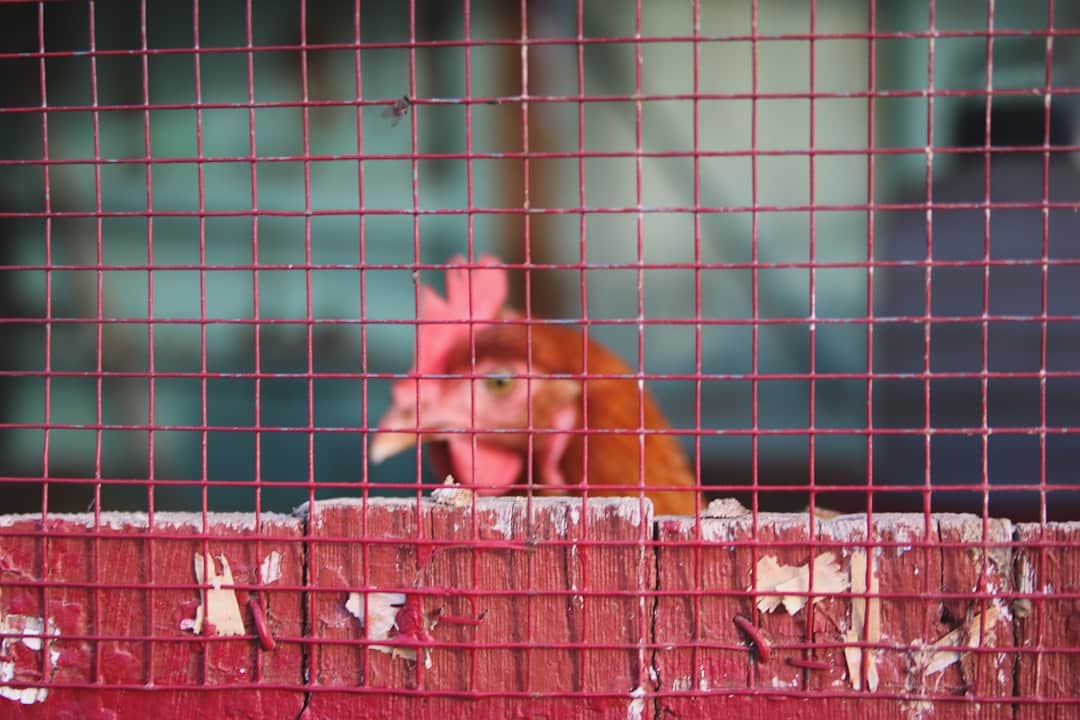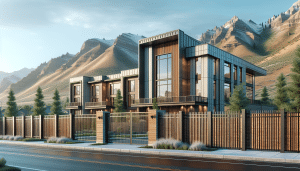When it comes to installing a fence on your property, there are several common mistakes that can be made. These mistakes can lead to a less than satisfactory result and may even require costly repairs or replacements down the line. It is important to avoid these mistakes in order to ensure a successful fence installation that will last for years to come.
Contents
- 1 Importance of Hiring a Professional Fence Installer
- 2 Common Fence Installation Mistakes to Avoid
- 3 Selecting the Right Fence Material for Your Property
- 4 Proper Planning and Preparation for Fence Installation
- 5 Measuring and Marking Your Fence Line Correctly
- 6 Digging and Setting Fence Posts at the Right Depth and Distance
- 7 Proper Fence Panel Installation and Alignment
- 8 Securing and Finishing Your Fence Installation
- 9 Why You Should Choose Logan Utah Fence Company for Your Fence Installation Needs
Key Takeaways
- Hiring a professional fence installer is important to avoid common mistakes.
- Common fence installation mistakes include improper measuring, digging, and panel alignment.
- Selecting the right fence material for your property is crucial for durability and aesthetics.
- Proper planning and preparation, including marking and measuring your fence line, is essential for a successful installation.
- Logan Utah Fence Company is a reliable choice for your fence installation needs.
Importance of Hiring a Professional Fence Installer
While some homeowners may be tempted to save money by attempting a DIY fence installation, there are several benefits to hiring a professional fence installer. First and foremost, professionals have the knowledge and experience necessary to ensure that the job is done correctly. They understand the intricacies of different fence materials and can recommend the best option for your specific needs. Additionally, professional installers have access to specialized tools and equipment that may not be readily available to the average homeowner. This can result in a more efficient and higher quality installation.
On the other hand, DIY fence installation can be risky. Without proper knowledge and experience, it is easy to make mistakes that can compromise the integrity of the fence. This can lead to issues such as leaning or sagging panels, uneven spacing, or even complete failure of the fence structure. In addition, DIY installations may not meet local building codes or regulations, which can result in fines or other legal issues. Hiring a professional ensures that the job is done right the first time, saving you time, money, and stress in the long run.
Common Fence Installation Mistakes to Avoid
1. Not selecting the right fence material for your property: One of the most common mistakes made during fence installation is choosing the wrong material for your property. Different materials have different strengths, weaknesses, and maintenance requirements. It is important to consider factors such as your budget, desired level of privacy or security, and the climate in your area when selecting a fence material.
2. Poor planning and preparation: Another common mistake is failing to properly plan and prepare for the installation. This includes obtaining any necessary permits or approvals, locating underground utilities, and ensuring that the fence will be installed within your property boundaries. Without proper planning, you may encounter delays, unexpected costs, or even legal issues.
3. Incorrect measurement and marking of fence line: Accurate measurement and marking of the fence line is crucial for a successful installation. Failing to do so can result in uneven spacing, crooked panels, or gaps in the fence. It is important to take the time to measure and mark the fence line correctly before beginning the installation.
4. Improper digging and setting of fence posts: The proper installation of fence posts is essential for a sturdy and long-lasting fence. This includes digging the post holes to the correct depth and distance apart, as well as ensuring that they are properly aligned. Failing to do so can result in a fence that leans or sags over time.
5. Incorrect fence panel installation and alignment: Once the posts are in place, it is important to install the fence panels correctly. This includes ensuring that they are level, properly aligned, and securely attached to the posts. Failure to do so can result in a fence that looks unprofessional and may not provide the desired level of privacy or security.
6. Inadequate securing and finishing of fence installation: Finally, it is important to properly secure and finish the fence installation. This includes adding any necessary hardware or accessories, such as gate latches or post caps, as well as applying a protective finish to the wood or other materials. Failing to do so can result in a fence that is susceptible to damage from weather or other elements.
Selecting the Right Fence Material for Your Property
When selecting a fence material for your property, there are several factors to consider. First and foremost, you should consider your budget. Some materials, such as chain link or vinyl, may be more affordable than others, such as wrought iron or cedar. Additionally, you should consider the desired level of privacy or security that the fence will provide. For example, a solid wood or vinyl fence may offer more privacy than a chain link fence. Finally, you should consider the climate in your area. Some materials, such as wood, may require more maintenance in order to withstand harsh weather conditions.
There are several popular fence materials to choose from, each with its own pros and cons. Wood is a classic and versatile option that can be customized to fit any style or design. It offers a natural and warm aesthetic, but may require regular maintenance to prevent rot or decay. Vinyl is a low-maintenance option that is resistant to rot, insects, and fading. It is available in a variety of styles and colors, but may be more expensive than other materials. Chain link is a cost-effective option that is durable and low-maintenance. It is often used for security purposes or to enclose large areas, but may not offer much privacy. Wrought iron is a high-end option that offers both security and aesthetic appeal. It is durable and long-lasting, but may require regular maintenance to prevent rusting.
Proper Planning and Preparation for Fence Installation
Proper planning and preparation are essential for a successful fence installation. Before beginning the installation process, it is important to obtain any necessary permits or approvals from your local building department. This ensures that your fence will meet all applicable building codes and regulations. Additionally, you should locate any underground utilities, such as gas lines or electrical cables, to avoid damaging them during the installation process.
It is also important to determine the exact location of your property boundaries before installing a fence. This can be done by consulting your property survey or hiring a professional surveyor. Installing a fence on your neighbor’s property can lead to legal issues and costly disputes. Once you have determined the property boundaries, you can mark the fence line using stakes and string. This will help ensure that the fence is installed in a straight line and within your property boundaries.
Measuring and Marking Your Fence Line Correctly
Accurate measurement and marking of the fence line is crucial for a successful installation. Before beginning the installation process, it is important to gather the necessary tools, including a measuring tape, stakes, string, and a level. Start by measuring the length of your fence line and dividing it by the length of each fence panel. This will give you an idea of how many panels you will need to purchase.
Next, use stakes and string to mark the exact location of your fence line. Start by placing a stake at one end of the fence line and tying a string to it. Pull the string taut and walk to the other end of the fence line, placing another stake and tying the string to it. Use a level to ensure that the string is level and adjust the stakes as necessary. Continue this process along the entire fence line, placing stakes every 6-8 feet.
Digging and Setting Fence Posts at the Right Depth and Distance
The proper installation of fence posts is essential for a sturdy and long-lasting fence. Before digging any post holes, it is important to check with your local building department for any specific requirements or regulations regarding post depth or spacing. In general, fence posts should be set at least 2 feet deep in the ground to ensure stability.
To dig the post holes, you will need a post hole digger or an auger. Start by marking the location of each post hole using stakes and string. Use a post hole digger or auger to dig each hole to the desired depth, making sure that they are wide enough to accommodate the size of your posts. As you dig each hole, check for any underground utilities and adjust the location if necessary.
Once the holes are dug, place a layer of gravel or crushed stone in the bottom of each hole. This will help with drainage and prevent the posts from rotting. Next, place a post in each hole, making sure that they are level and plumb. Use a level to check both the vertical and horizontal alignment of each post. Once the posts are properly aligned, fill each hole with concrete, making sure to compact it as you go. Allow the concrete to dry and cure according to the manufacturer’s instructions before continuing with the installation.
Proper Fence Panel Installation and Alignment
Once the posts are in place, it is important to install the fence panels correctly. Start by attaching a panel to one of the end posts using screws or nails. Use a level to ensure that the panel is level and adjust as necessary. Once the first panel is securely attached, continue installing the remaining panels, making sure that they are properly aligned and evenly spaced.
To ensure proper alignment, use a string or chalk line to create a straight line along the top of each panel. This will help guide you as you install each panel and ensure that they are all at the same height. Additionally, use a level to check both the vertical and horizontal alignment of each panel as you go.
Securing and Finishing Your Fence Installation
Properly securing and finishing your fence installation is essential for its longevity and appearance. Start by adding any necessary hardware or accessories, such as gate latches or post caps. These can be attached using screws or nails, depending on the material of your fence.
Next, apply a protective finish to your fence to help prevent damage from weather or other elements. This can be done using a brush or sprayer, depending on the type of finish you choose. Follow the manufacturer’s instructions for application and drying times.
Finally, take the time to inspect your fence for any loose or damaged components. Tighten any loose screws or nails and replace any damaged panels or posts. Regular maintenance, such as cleaning and reapplying finish as needed, will help ensure that your fence remains in good condition for years to come.
Why You Should Choose Logan Utah Fence Company for Your Fence Installation Needs
When it comes to fence installation, choosing the right company is crucial. Logan Utah Fence Company is a trusted and experienced provider of fence installation services in the Logan, Utah area. They offer a wide range of fence materials and styles to choose from, including wood, vinyl, chain link, and wrought iron. Their team of professional installers has the knowledge and experience necessary to ensure that your fence is installed correctly and meets all applicable building codes and regulations.
In addition to their expertise, Logan Utah Fence Company offers a variety of services to meet your specific needs. Whether you are looking for a privacy fence for your backyard or a security fence for your commercial property, they have the skills and resources to get the job done right. They also offer free consultations and estimates, so you can feel confident in your decision to choose them for your fence installation needs.
Don’t just take our word for it – Logan Utah Fence Company has received numerous positive testimonials and reviews from satisfied customers. Their commitment to quality craftsmanship, attention to detail, and exceptional customer service sets them apart from other fence installation companies in the area.
In conclusion, avoiding common fence installation mistakes is essential for a successful and long-lasting fence. Hiring a professional fence installer offers several benefits, including knowledge and experience, access to specialized tools and equipment, and peace of mind knowing that the job will be done right the first time. When selecting a fence material for your property, it is important to consider factors such as budget, desired level of privacy or security, and climate. Proper planning and preparation, accurate measurement and marking of the fence line, correct installation of fence posts and panels, and proper securing and finishing are all crucial steps in the fence installation process.
When it comes to choosing a fence installation company, Logan Utah Fence Company is a trusted and experienced provider in the Logan, Utah area. They offer a wide range of fence materials and styles, as well as free consultations and estimates. Their team of professional installers has the knowledge and experience necessary to ensure that your fence is installed correctly and meets all applicable building codes and regulations. Don’t settle for anything less than the best – choose Logan Utah Fence Company for your fence installation needs.
If you’re considering installing a fence, it’s important to avoid common mistakes that can lead to costly repairs or replacements down the line. Thankfully, the experts at Logan Fence Co. have shared their valuable insights on the topic. In their related article, “Why Fences are Essential for Pet Owners: Keeping Your Furry Friends Safe,” they highlight the importance of installing a fence to protect your beloved pets and provide them with a safe and secure outdoor space. To learn more about their expert tips and advice, check out Logan Fence Co.’s website at https://loganfenceco.com/blog/why-fences-are-essential-for-pet-owners-keeping-your-furry-friends-safe/.




